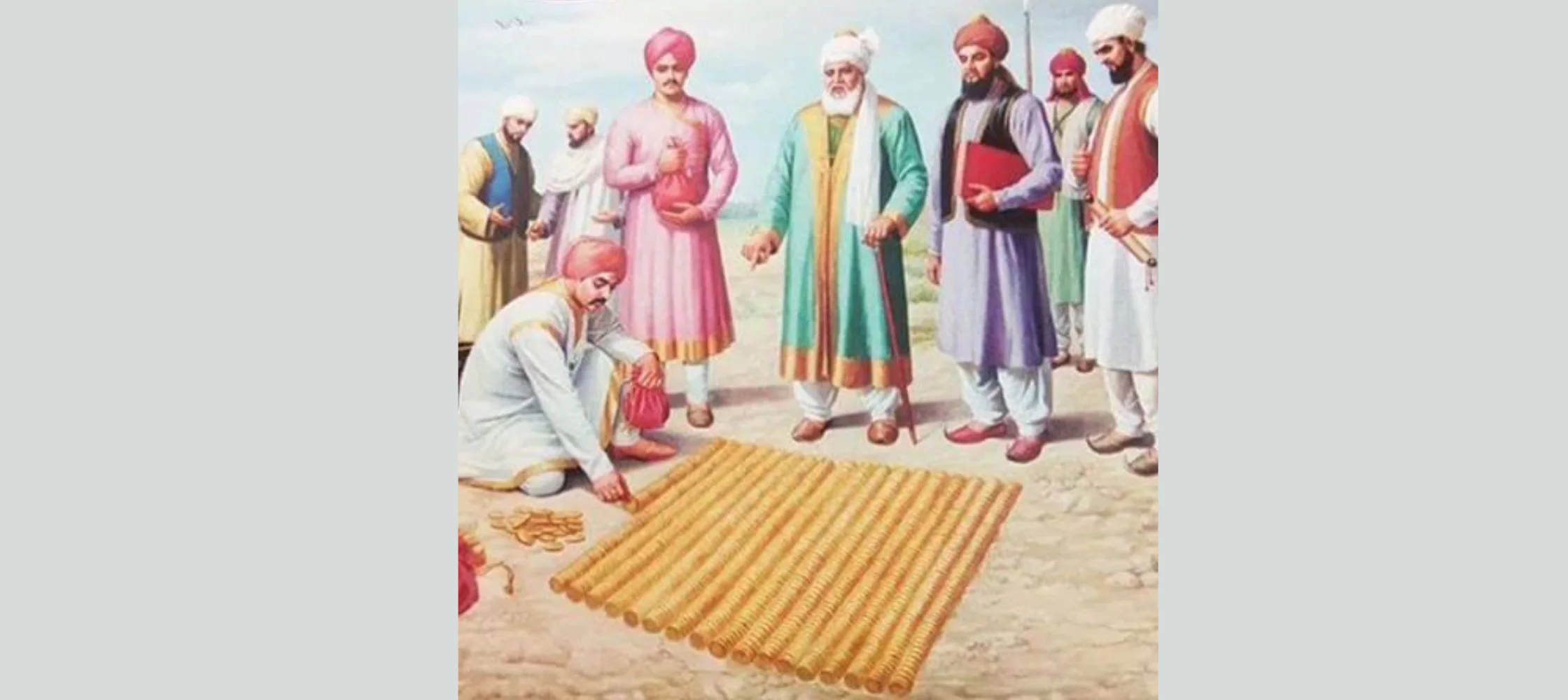
The Rising Panjab Bureau
The national focus on the martyrdom of two Sahibzadas of the 10th Sikh master, Guru Gobind Singh provided by the observance of the occasion as “Veer Bal Diwas” by the Modi government has heightened public interest in the untold sacrifices made by the Dasam Pitah and his family in his relentless fight against the Mughal tyrants.
Diwan Todar Mal occupies a special place in Sikh history which is full of sacrifices. Diwan Todar Mal was a wealthy Hindu merchant of Sirhind, who on 13 December 1705 performed the cremation of the three martyred bodies of the two younger sons of Guru Gobind Singh, Zorawar Singh aged about 6, Fateh Singh aged about 9 and their grandmother, Mata Gujari.
This incident occurred after Sahibzades had been executed by the Mughal authorities on 12 December 1705 for not renouncing their faith and the death from the shock of their grandmother at the news of the sudden and despicable execution of the innocent youngsters. Diwan Todar Mal performed the last rites for the two younger sons of Guru Gobind Singh martyred on the orders of Wazir Khan, faujdar of Sirhind, and of Mata Gujari, the Guru's mother. It is said that landowners around the Sirhind Fort would not permit him to hold the cremation in their fields until one Chaudhari Atta agreed to sell him a plot.
The administrator's stipulation was that the buyer (Todar Mall) will take only as much of the space as he could cover with gold mohars (gold coins), that he would lay out for the purchase. The diwan produced the coins and bought the piece of land he needed for the cremation. It is estimated that at least 7,800 gold coins were required to buy the required land.
History tells us that Seth ji raised the required number of coins and that he cremated the three bodies and put the ashes in an urn which he buried in the land he had bought. The site is now marked by Gurdwara Jyoti Saroop at Fatehgarh Sahib, near Sirhind.
Modern historians have tried to identify Seth Todar Mal as a son or later descendant of Raja Todar Mal, of Sirhind, who won renown as an administrator under the Mughal emperors, Shah Jahan and Aurangzeb, and who, according to Shah Nawaz Khan, Ma'asir ulUmara, lived up to 1076 AH/AD 1666. To perpetuate the memory of the noble-minded Seth, a road in Sirhind town and a hall in Gurdwara Fatehgarh Sahib has now been named after him.
The Haveli Todar Mal also known as Jahaz Haveli is situated on the eastern side of the Sirhind-Ropar Railway Line just 1 kilometer away from Fatehgarh Sahib. These are the remains of the Haveli of Devan Todar Mal, and a fine building it must have been in its heyday. Todar Mal was a true devotee of Guru Gobind Singh.
With Mata Gujri and the younger sons of the Guru – Baba Zorawar Singh and Baba Fateh Singh – shaheed (martyred) at the tender ages of 6 and 9 the despicable Mughal authorities refused their funeral rites on government land, it was decreed that their funeral rites could only be performed on land bought from Chaudhari Atta. Not only this but the land could only be bought by laying gold coins (ashrifs) on the required area, possibly vertically.
Todar Mal did not shun his responsibility and laid down the required coins and made arrangements for the cremations.
A gold coin has a diameter of around 3cm and would take up an area of (3 x 3) 9cm squared. The land required for the martyred children would be approximately 2.0m by 2.0m a total area of 40,000 cm squared if laid next to each other. Add to this the area required for Mata Ji (2.0m by 1.5m) if the coins were laid horizontally then to cover this area would require around 7800 gold coins. Now, if the coins had to be stacked vertically then possibly 10 coins would be needed to cover the 9cm squared area, so vertically 7800 x 10 coins would be required, or 78,000. That is an awful lot of gold coins even today. One can only imagine how much they were worth three hundred years ago. It is safe to say it was probably his life’s savings. Maybe he had to beg and borrow to raise the total amount, who knows, but the fact remains this was truly a noble deed. Todar Mal forsook everything for his love of Guru Gobind Singh, which is the reason why Sikhs hold Diwan Todar Mal in such high esteem.
A splendid Gurdwara, Gurdwara Jyoti Saroop, now stands at the place where these three martyrs were cremated. This Gurdwara is at a distance of about a mile to the east of the main Gurdwara at Fatehgarh Sahib and the road connecting the two Gurdwaras is known as Diwan Todar Mal Marg and a commemorative gate called the Diwan Todar Mal commemorative gate has also been built on this connecting road. A spacious congregation hall has been constructed by the Sikhs at Fatehgarh Sahib to commemorate his noble service which is a symbol of the great respect the Sikhs have for the Dewan.
Your email address will not be published. Required fields are marked *
29 Jan, 2024
29 Jan, 2024
29 Jan, 2024
25 Jan, 2024